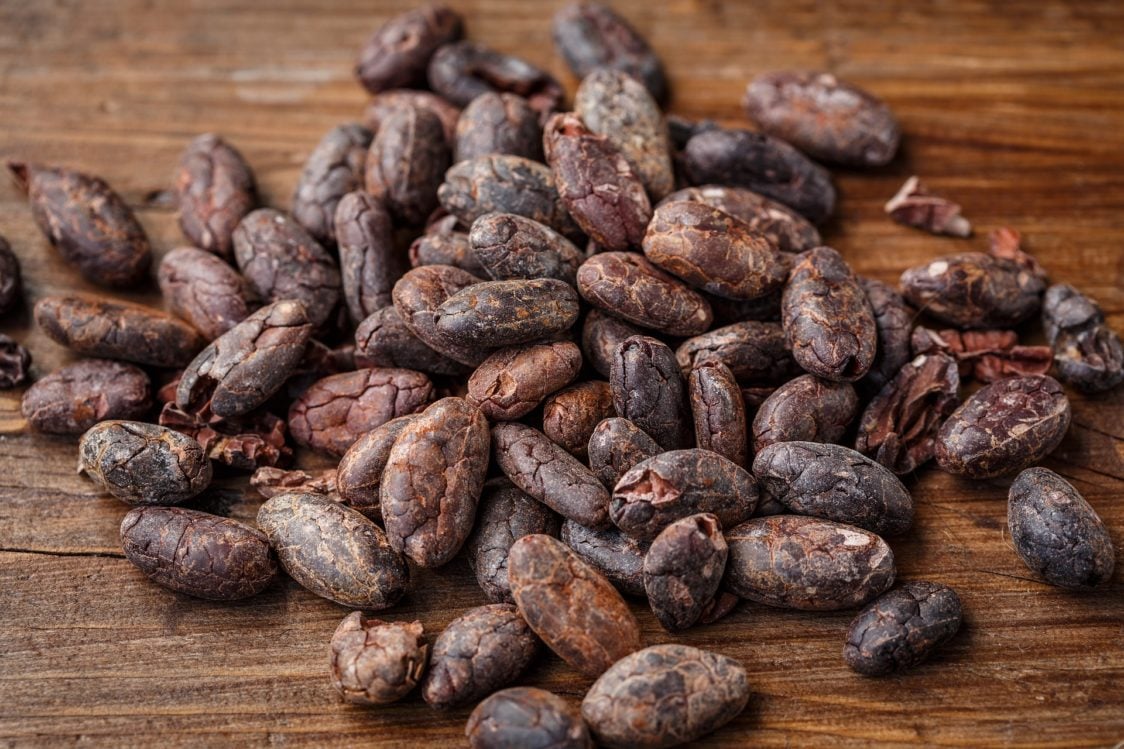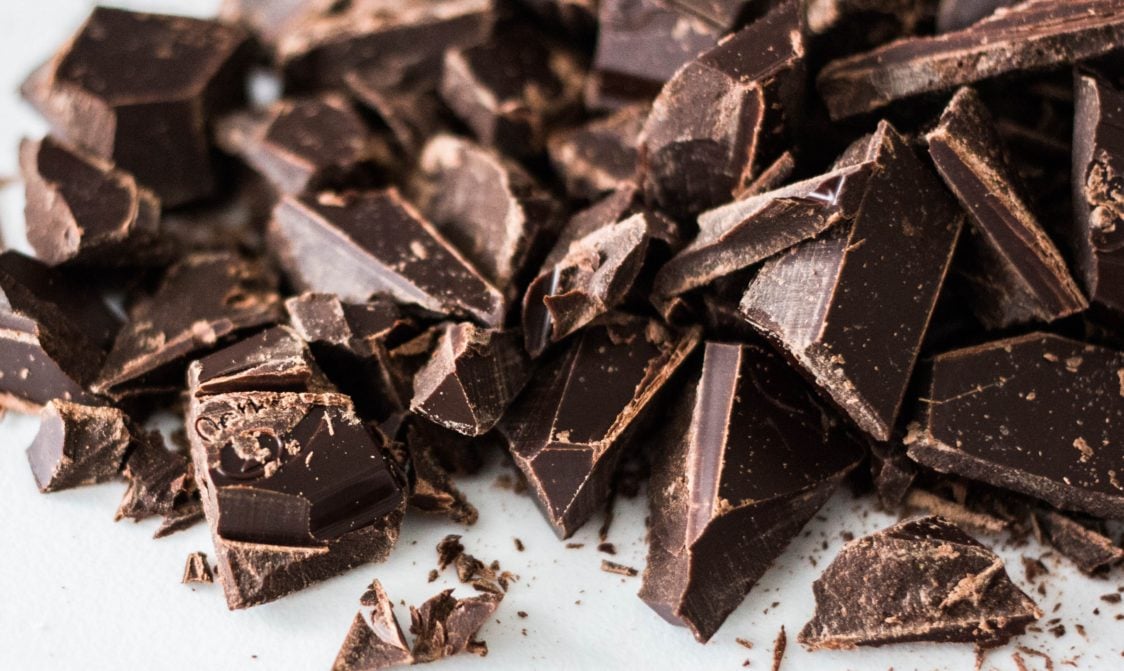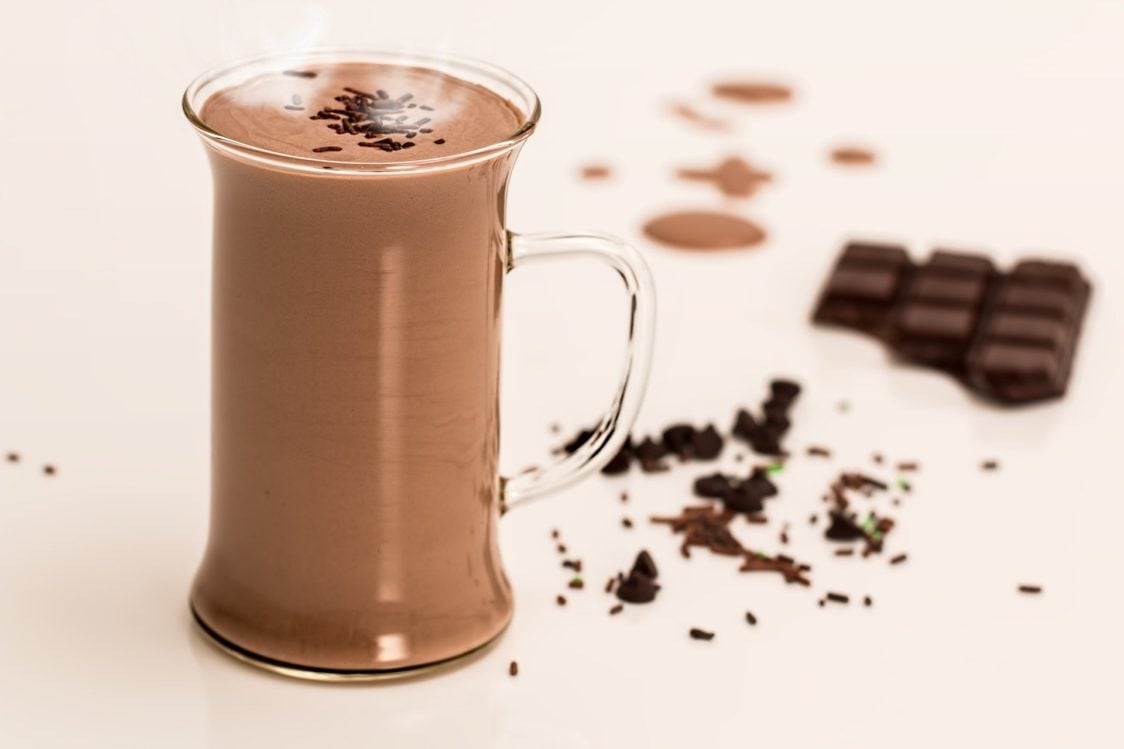Table of Contents
What comes to your mind with the word chocolate? Is it a bar of your favourite sweet treat, ice cream or dark drink? Chocolate is rightly one of the most popular sweets and its enthusiasts can be found on every continent. By that I mean even the scientific team in Antarctica. Maybe until now you considered chocolate a sure way to obesity and health problems. But what if we tell you that chocolate is basically healthy and even has several health benefits? Read the article about the origin, composition, advantages and disadvantages of this “food of the gods”.
Chocolate and its origin
Chocolate came to Europe from the American continent when European sailors returned. Hernán Cortés, a well-known Spanish conquistador, is considered one of its discoverers. He personally brought chocolate to King George V in 1528, along with other discoveries from Mexico. And what about Columbus? Although Cortés brought samples to Europe, Christopher Columbus had already encountered cocoa beans before him. In 1502, he captured canoes with “strange-looking almonds,” which he considered to be currency in Mesoamerica. It was, of course, cocoa beans that they might have paid for, because they were of great value to the civilizations of the day. [1] [2]

For the sake of completeness, the term “Mesoamerica” refers to the cultural area of Central America and Mexico. It is a period of civilizations such as the Maya, Aztecs or Toltecs before the arrival of Christopher Columbus and the Spaniards. However, we have to look for the real beginning of chocolate in the Mayan culture, which was probably the first to cultivate cacao as early as 400. The Mayans prepared a drink from chocolate, which they called “xocolatl”. It was a drink made of ground cocoa beans, which dissolved in water with cinnamon and black pepper. They called the drink “food of the gods” and especially adored it by the Aztec ruler Montezuma II, he even indulged in it several times a day. However, it was not a very common raw material, the beans were stored together with gold and precious stones and used as currency. [1] [3] [4]
The plant received the official Latin name Theobroma cacao from the Swedish scientist Carl Linnaeus in 1753. He used its Aztec origin to name the plant, the name consists of the Latin term “theobroma”, which literally means “food of the gods”, and the Aztec word xocolatl. [1]
Can you imagine the world of sweets, confectionery and even foods without chocolate today? It has been a part of our lives for several generations and many of us have found their favorite sweet treats in the product range. It is certainly worth mentioning a few sweet milestones in history [4]:
1815 – Conread Van Houten creates cocoa butter
1879 – Rudolph Lindt makes the first dark chocolate by the conching method
1923 – Frank Mars invents the legendary Milky Way
1964 – The first Nutella bottle is born
1974 – Production of the iconic Kinder egg begins
Consumption of chocolate in the world
Today, cocoa is a very popular raw material and cocoa products are popular not only with children. Chocolate even has its own international day – November 29. According to statistics from 2017, the Swiss were at the top in the consumption of chocolate per capita, followed by the Austrians and the Germans, but it is not so popular in Japan and China [5] [6]:
- Switzerland – 8.8 kg
- Austria – 8.1 kg
- Germany – 7.9 kg
- Russia – 4.8 kg
- USA – 4.4 kg
- France – 4.3 kg
- Japan – 1.2 kg
- China – 0.1 kg
The popularity of chocolate in Switzerland is not such a surprise, as the country itself is known for its exceptional quality of chocolate products. If you have ever tasted some of their legendary products, such as Toblerone, you will surely agree that it is a high league. Chocolate is the final product, but in the beginning, there is a cocoa tree, on which there are fruits with cocoa beans. The fruits of the cacao tree resemble teats, 20-30 teats grow on one tree per year and there are 20-40 beans in each of them. If you calculate it, we get 400 – 1200 cocoa beans straight from one tree. You need about 400 beans to make about 450 g of chocolate, which means you can make about 0.5 to 1.5 kg of chocolate from one tree. [5] [6]

The downside of the chocolate industry is the low earnings of workers in difficult conditions. They earn an average of less than $ 1 a day. In addition, the share of farmers in the selling price of the chocolate bar is about 6%, while producers and traders keep 80%. Being a farmer is not easy, as they have to harvest themselves, and they also have the uncertainty associated with growing cocoa on their shoulders. [5]
Chocolate and its nutrient content
There are various chocolates on the market with different contents of cocoa and other ingredients. However, chocolate consists of cocoa powder, cocoa butter and sugar. Of course, in the case of milk chocolate, it also contains milk in powder form. In cocoa, you can find many healthy substances, such as polyphenols, more than green tea and red wine. For all, it is important to mention flavonoids and their subcategory flavanols – oligomeric procyanidins and epicatechin. Other ingredients include caffeine, theobromine, tryptophan and β-phenylethylamine. [7]

You can get a better overview of the nutrient content in 100 g of cocoa and a comparison with dark or milk chocolate thanks to the following table [1]:
| COCOA | DARK CHOCOLATE | MILK CHOCOLATE | |
|---|---|---|---|
| Energy value (kcal / kJ) | 335 / 1486 | 515 / 2155 | 545 / 2281 |
| Fats (g) | 25,6 | 33,6 | 36,3 |
| Carbohydrates (g) | 11,5 | 49,7 | 50,5 |
| Sugar (g) | trace amounts | 49,7 | 50,5 |
| Dietary fibre (g) | – | 8 | 3,2 |
| Protein (g) | 20,4 | 6,6 | 7,3 |
| Potassium (mg) | – | 300 | 420 |
| Phosphorus (mg) | 685 | 186 | 207 |
| Calcium (mg) | 51 | 51 | 262 |
| Iron (mg) | 14,3 | 5 | 3 |
| Sodium (mg) | – | 11 | 120 |
| Vitamin B3 (Niacin) (mg) | 1,7 | 0,6 | 0,6 |
| Vitamin B2 (Riboflavin) (mg) | 0,3 | 0,07 | 0,39 |
| Vitamin B1 (Thiamine) (mg) | 0,08 | 0,07 | 0,09 |
| Vitamin A (µg) | 7 | 9 | 25 |
| Phenols (mg) | 996 – 3781 | 579 | 160 |
Chocolate and its importance for health and weight loss
Treatment with chocolate?
Chocolate is nowadays an important part of sweet shelves in stores. But did you know that chocolate was ever prescribed for medical purposes as well? Attitudes towards chocolate have changed over time, the euphoric effects of chocolate did not take long and quickly spread to Western Europe. According to the church, drinking chocolate was a devaluation of religious fasting, which changed in 1662, when Cardinal Brancaccio recognized that drinking chocolate was not an obstacle to fasting. Until then, the people of Europe had the opportunity to enjoy this delicacy only for medical reasons. This approach may be due to the Hippocratic-Galenic approach to treatment. This approach strongly influenced medical science during the 17th and 18th centuries and was treated exclusively by the allopathic system. Can you imagine today that your doctor would prescribe cold substances for a “dark” disease and wet medicines or meals for dry diseases? [8]

Proof that cocoa was used for medical purposes is the manuscript of Badianus (Badianius Manuscript) from 1552, which contained medicinal plants. The file includes Mexican diseases, their treatment and nutritional problems. It also mentions cocoa and its derivatives, which have been used as a nutrient or medicine in the treatment of sore throat, constipation, fatigue or hemorrhoids. [8]
In the middle of the 19th century, special chocolate was recommended for people after severe acute illnesses, patients with chronic pulmonary catarrh or people suffering from fatigue. The ingredients of this analeptic chocolate were cocoa from Caracca, Ceylon cinnamon and Avana sugar or “potato flour”. It is difficult to say whether it was an exceptional product only for a small group of society, and to what extent it alleviated the difficulties. What would you say if you took a similar delicious medicine at the pharmacy today after leaving the clinic? [8]
You might be interested in these products:
Benefits for health and weight reduction
Rich in nutrients
Are you a fan of quality dark chocolate with at least 70% cocoa content? Consumption of quality chocolate is beneficial for humans for its nutrients, but even in this case, everything in moderation. 101 g 70 – 85% dark chocolate represents about 600 calories, 24 g sugar and 43 g fat, it should not be forgotten. At the same time, however, 100 g of chocolate can significantly increase your intake of minerals and fiber. 100 g is not small and you should definitely not eat it daily, but it should be added that you will find 11 g of fiber or 67% and 58% of the recommended daily dose of iron and magnesium. [9] [10]
Chocolate and blood pressure
A 2017 study looked at the effect of chocolate on blood pressure and vascular function. Chocolate is rich in polyphenols, and in this context, several epidemiological studies suggest some relationship between daily cocoa consumption and better cardiovascular outcomes. Clinical intervention studies demonstrate the positive effects of flavanol-rich chocolate or cocoa in reducing blood pressure and improving vascular function. The importance of chocolate consumption in lowering blood pressure and improving endothelial function has been demonstrated not only in people suffering from ischemic heart disease, heart failure or hypertension, but also in healthy people. Healthy blood vessels and proper blood pressure are very important for health and maintaining optimal weight. The general belief that chocolate soothes is probably not just an excuse for chocolate lovers. [11]
Beneficial for digestion
One of the advantages of chocolate is its prebiotic property. Prebiotics are specific substances that perform the function of food for “beneficial” bacteria in our digestive system. Chocolate has the ability to act as a prebiotic, thus promoting the growth of “good” bacteria. Proper health of digestion is very important for health and weight reduction, because the quality of digestion also depends on the body’s ability to absorb nutrients. Among other things, a small dose before and after a meal “triggers” hormones that inform the brain that you are already full. Insufficient functioning of digestion is a common problem, and therefore it is certainly more pleasant to support digestion with this delicacy. Try the trick with satiety – get sweet as an unconventional “first course”, maybe it will have an effect on you. [12]

Chocolate acts as a prebiotic, but it can also be a probiotic. This is evidenced by the results of research from 2018, which dealt with dark chocolate enriched with encapsulated probiotic bacteria – Lactobacillus plantarum. According to the results, the bacteria in the chocolate did not affect its appearance, texture or aroma, and in addition they had good viability for 180 days at 20° C. [13]
Are you interested in the importance of probiotics for health? Everything you need can be found in the article – Probiotics: the importance of beneficial bacteria for immunity and overall health of athletes.
Speaking of nutrient absorption, a 2018 study examined the relationship between dark chocolate and blood sugar levels. The results suggest that 48 g of 70% dark chocolate may reduce insulin resistance and fasting glucose levels. 48 g of chocolate per day is not enough, but the ability to prevent resistance and other complications is worth attention. [10]
Do you want to know more about insulin resistance? Read our article – Insulin sensitivity – how to increase it and prevent insulin resistance.
Chocolate and cholesterol
Another benefit of dark chocolate, which affects overall health, is the effect on HDL and LDL cholesterol levels. Indeed, cocoa powder has been shown to significantly reduce oxidized LDL cholesterol in men. In addition, it increased the level of “good” HDL cholesterol and reduced the level of “bad” LDL cholesterol. Wondering why we mention oxidized LDL cholesterol? This means that cholesterol reacted with free radicals, making it reactive and capable of damaging tissues in the body. For example, not only in general can the lining of the arteries in the heart be damaged. [9]

Chocolate and psyche
Chocolate is not just a source of polyphenols, vitamins and minerals. The vast majority of people reach for chocolate as a result of the desire for sweets. You may not be surprised by the results of a study that showed that chocolate accounted for 49% of all appetite in 25 participants. The taste for chocolate was more pronounced in women, especially during the premenstrual period. [14]
Another study focused on chocolate and depression, involving 120 high school female students who love chocolate. According to the results, a depressed mood can increase the taste of chocolate. However, the truth remains that the reasons for this taste in emotional difficulties are not clear. [14]
According to a systematic review from 2013, 5 out of 8 studies showed the effect of chocolate on improving mood or alleviating negative feelings. However, this is not all, 3 out of 8 studies also showed an improvement in cognitive abilities. [12] [15]

So what does that mean? Chocolate is a pleasant “antidepressant” that makes it easier to handle difficult situations. Perhaps this is one of the reasons why the Aztec ruler Montezuma II. so he adored chocolate. In addition, the mental state is important for the motivation to exercise and maintain the right body weight. A person with depressed feelings will probably not be enthusiastic about voluntary physical activity and motivated to lose weight.
Daily dose of chocolate

You have learned all the benefits, but the question remains, how much cocoa or dark chocolate can a person take per day so as not to harm them even more. An article from 2011 presents the results of a study that has the answer. A daily dose of 25 g of dark chocolate slightly increased body weight after three months. However, a daily intake of 6 g did not lead to weight gain. [14]
In another study, participants consumed 20 g of chocolate with 90% or 55% cocoa content for 30 days. There was a reduction in blood pressure in both groups, but more in participants who ate 90% chocolate. The recommendation in the study’s conclusions is that 20 g of dark chocolate (90%) a day can have a beneficial effect on your arteries. [16]
Chocolate is definitely useful in the right amount, but think of calories as well as sugar and fat content. The 2011 survey did not look at quantity, but at frequency. The total number of participants was 114,000 and the following facts were found for people who ate more than twice a week [17]:
- 37% lower risk of developing cardiovascular disease
- 31% lower risk of diabetes
- 29% lower risk of stroke
For the sake of completeness, it should be added that the said summary did not distinguish between dark and milk chocolate and included its various forms. [17]
Chocolate, and especially dark chocolate, has several benefits for maintaining overall health and promoting weight loss. Last but not least, chocolate is a raw material that offers an incredible number of options on the market, and everyone will find something for themselves. Do you want your friends to learn about chocolate and its importance for health and weight loss? Feel free to support the article by sharing.
[1] Maria Teresa Montagna, Giusy Diella, Francesco Triggiano, Giusy Rita Caponio, Osvalda De Giglio, Giuseppina Caggiano, Agostino Di Ciaula, Piero Portincasa – Chocolate, “Food of the Gods”: History, Science, and Human Health – https://www.ncbi.nlm.nih.gov/pmc/articles/PMC6950163/
[2] HERNANDO CORTES: DISCOVERER OF COCOA – https://www.cocoahernando.com/hernando-cortes-discoverer-of-cocoa/
[3] What is the meaning of Mesoamerica? – https://www.maya-archaeology.org/glossary-dictionary-definitions-jargon/what-is-mesoamerica-how-to-define-mesoamerica-pre-columbian-pre-hispanic-mayan.php/
[4] Roberto VERNA – The history and science of chocolate – https://www.researchgate.net/publication/259449173_The_history_and_science_of_chocolate
[5] Abigail Abesamis – 8 unbelievable facts about the $103 billion chocolate industry – https://www.insider.com/chocolate-industry-facts-statistics-consumption-2019-11/
[6] Niall McCarthy – Switzerland Comes First For Chocolate Consumption – https://www.statista.com/chart/3668/the-worlds-biggest-chocolate-consumers/
[7] Magdalena Nowaczewska, Michał Wiciński, Wojciech Kaźmierczak, Henryk Kaźmierczak – To Eat or Not to eat: A Review of the Relationship between Chocolate and Migraines – https://www.ncbi.nlm.nih.gov/pmc/articles/PMC7146545/
[8] Donatella Lippi – Chocolate in History: Food, Medicine, Medi-Food – https://www.ncbi.nlm.nih.gov/pmc/articles/PMC3708337/#B4-nutrients-05-01573/
[9] Kris Gunnars – 7 Proven Health Benefits of Dark Chocolate – https://www.healthline.com/nutrition/7-health-benefits-dark-chocolate/
[10] Jamie Eske – What are the health benefits of dark chocolate? – https://www.medicalnewstoday.com/articles/324747/
[11] Valeria Ludovici, Jens Barthelmes, Matthias P. Nägele, Frank Enseleit, Claudio Ferri, Andreas J. Flammer, Frank Ruschitzka, Isabella Sudano – Cocoa, Blood Pressure, and Vascular Function – https://www.ncbi.nlm.nih.gov/pmc/articles/PMC5539137/
[12] Anna Brooks – 8 Healthy Reasons to Eat Dark Chocolate – https://www.everydayhealth.com/diet-and-nutrition-pictures/delicious-reasons-to-eat-dark-chocolate.aspx#:~:text=Chocolate%20Is%20Good%20for%20Your%20Gut%20and%20May%20Help%20With%20Weight%20Loss&text=Eating%20chocolate%20every%20day%20probably,could%20help%20with%20weight%20loss./
[13] Milica Mirković, Sanja Seratlić, Kieran Kilcawley, David Mannion, Nemanja Mirković, Zorica Radulović – The Sensory Quality and Volatile Profile of Dark Chocolate Enriched with Encapsulated Probiotic Lactobacillus plantarum Bacteria – https://www.ncbi.nlm.nih.gov/pmc/articles/PMC6111586/
[14] David L. Katz, Kim Doughty, Ather Ali – Cocoa and Chocolate in Human Health and Disease – https://www.ncbi.nlm.nih.gov/pmc/articles/PMC4696435/
[15] Andrew Scholey, Lauren Owen – Effects of chocolate on cognitive function and mood: a systematic review – https://onlinelibrary.wiley.com/doi/abs/10.1111/nure.12065/
[16] Does eating a few squares of dark chocolate a day improve blood pressure? – https://www.nicswell.co.uk/health-news/does-eating-a-few-squares-of-dark-chocolate-a-day-improve-blood-pressure
[17] Sharon Basaraba – How Much Dark Chocolate Should You Eat to Live Longer? – https://www.verywellhealth.com/how-much-dark-chocolate-should-i-eat-to-live-longer-2223572/

